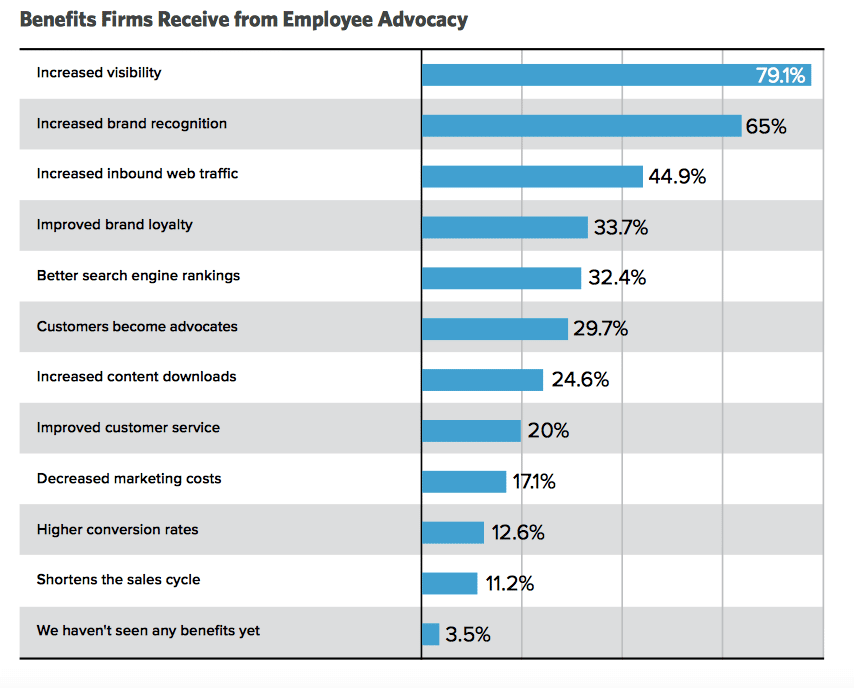
Employee Advocacy on Social Media: How to Make It Work for Your Business
Employee advocacy is the new influencer marketing. By activating your employees to be passionate about their work and your company, you can grow them into your most dedicated and authentic brand ambassadors, which boosts your brand reputation and attracts new talent.
Employee advocacy on social media is essentially the promotion of your brand, products, services, or even better your expertise, by your employees on their own social media channels, as well as your official brand accounts.
While an employee advocacy program may be implemented across several different channels, social media is usually the easiest to get started with, and often the most effective too.
This is because the majority of your employees probably already have their own social media accounts and followers. A study by LinkedIn found that employees of a company have, on average, ten times the followers of the official brand account. By tapping into their following you can widen your audience. If they’re already posting content related to your industry on their channels, a good proportion of this audience is likely to be your target market too.
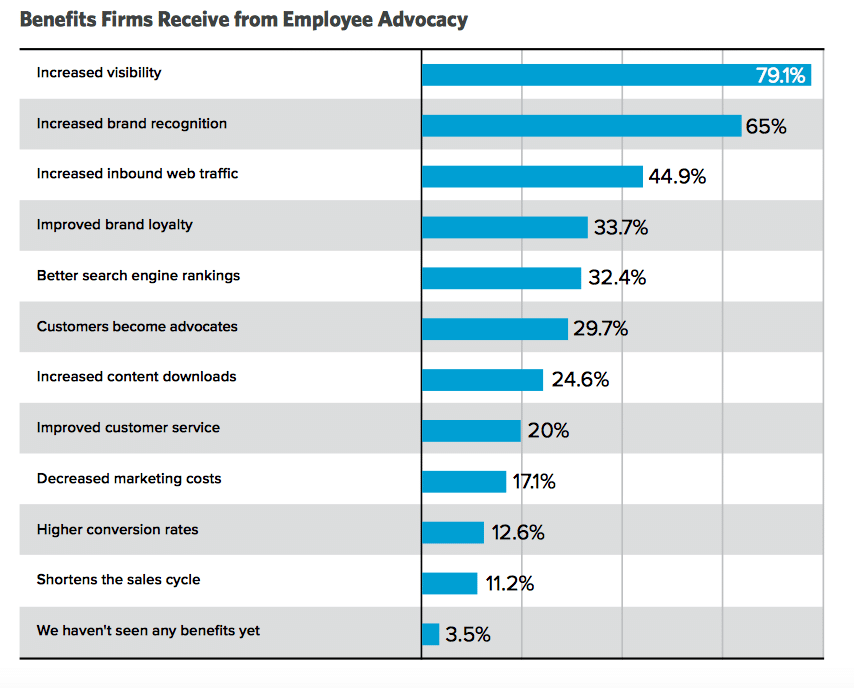
So how do you get started with an employee advocacy program on social media?
Quick Takeaways:
- Build a strong base of employee engagement before you start planning an employee advocacy program.
- Look for employee influencers to pilot your program and make suggestions on how it can be improved.
- Don’t forget to set goals and measure success – employee advocacy should be a critical part of your overall marketing strategy and treated like any other channel.
Invest in Employee Engagement and Strive for a Positive Workplace Culture
First things first. If your employees aren’t already actively engaged in their work and proud to be working for your brand, they aren’t going to be eager to post about it on social media. A common challenge organizations face when rolling out an employee advocacy program is engagement.
Having worked with hundreds of organizations on the rollout of their social advocacy programs, it’s clear that in order to get your employees engaged, they need to understand why doing so will be of benefit to them. WIIFM? (What’s In It For Me).
Therefore, before you dive into the practicalities of running an employee advocacy program, it’s vital to get back to basics and make sure your employees are positively thrilled to be working for you.
Sending out an anonymous employee engagement survey can be a good way to get the lay of the land first (you can easily set up an anonymous survey in Google Forms or SurveyMonkey).
Ask a variety of questions to judge your current level of engagement. This might include rating current management supportiveness and effectiveness, autonomy and flexibility at work, and how well each employee feels they align with the values and mission of the brand.
The reason I wrote Mean People Suck is because you cannot scale your content marketing or activate your employees to share if they hate their boss, or their company. It’s a culture and a leadership problem
The 2019 Edelman Trust Barometer Report shows that 67% of employees expect their employer to have a greater impact and their job to have a meaningful purpose, and almost three-quarters expect to be involved in key decisions and be part of an inclusive working culture.
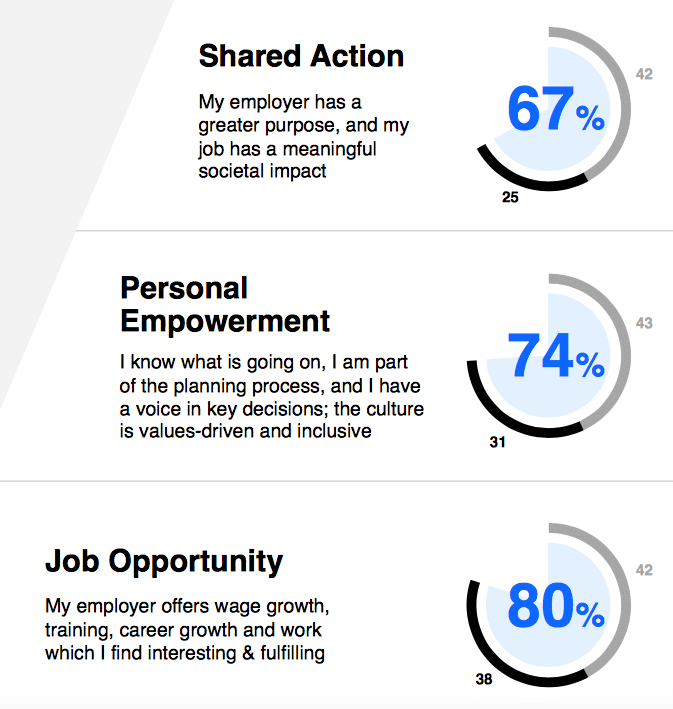
The results of your survey should give you an idea of how much work you have to do before you can be sure your employees are truly onboard.
You can also directly ask for general feedback on how to improve the employee experience and workplace culture as a whole.
If your current level of employee engagement isn’t where you’d like it to be, don’t dive into an employee advocacy program just yet. Instead, take some time to improve workplace culture and make sure all your employees know and understand your brand mission statement.
Identify Employee Influencers
Once you’ve built a culture of trust and respect, you can start reaching out to employees to let them know about your advocacy program.
These first employees should be the most enthusiastic and engaged employees in your workforce. They should also be active on social media, preferably posting business-related content on their accounts already.
While you can simply ask and encourage employees to post on social media, your program will be more effective if you offer some kind of incentive or benefits.
For example, running an internal competition to gamify the process, offering gift cards or another reward for the most active advocates, or simply giving them a shout-out or recognizing them in your next team meeting can all be effective incentives.
Put Your Employees at the Center of Your Marketing
The success of your employee advocacy program hinges on engagement: how often and how much your employees are using the tool(s) you provide them. Period. The more an employee engages with the tools the more content they will share.
The catch is that it’s no one’s job to use an employee advocacy tool, they have to want to use it. Training, rewards, and recognition are all important, however and to start, your employees need to understand why being socially active should be important to them.
Some key benefits include:
- Builds their knowledge and credibility
- Develops them as thought leaders in the eyes of their peers
- Helps establish their future career prospects and growth
- Allows them to directly contribute to the growth of their company
Fundamentally, when it comes to an individual employee’s success on any social network it can be narrowed down to three things: their profile, communications, and connections. It’s in both parties’ interests for the employee to improve their skills in each of these areas.
Create Social Media Guidelines
One of the main reasons why some employees choose not to share anything about their work on their personal social media channels is because they’re unsure if they’re allowed to mention the company they work for at all, or they’re afraid of going against company guidelines.
This is an understandable concern. After all, posts on social media can and have led to employees being terminated from certain organizations in the past.
Creating and publicizing internal social media guidelines not only shows employees that you’re happy for them to post about their work on their social media accounts, but it also gives them a clear framework of what exactly they can post about.
For example, Adidas’ social media policy states that employees must identify their role at the company and make it clear that any opinions are personal and not that of the brand. It also points out that while general discussion of work is fine, revealing confidential information or being negative toward your employer, co-workers, or customers is a no-go.
Make It Easy and Fun to Share Content
If it takes too much effort for your employees to post brand content on social media, you’ll probably find that they won’t bother – they aren’t being paid for it after all!
Make it easy for them to share content by highlighting interesting news stories or brand content in internal communications, and always provide “click to share” icons or links when you share content internally.
IBM created an entire employee portal to enable employees to share company content on Twitter, LinkedIn and Facebook easily, an initiative which was successful in recruiting 1,000 employees to their advocacy program.
You should also make sure you’re creating content that’s actually share-worthy. Nobody wants to bore their social media followers with dull content, so make the effort to come up with genuinely interesting and useful content or something fun to share.
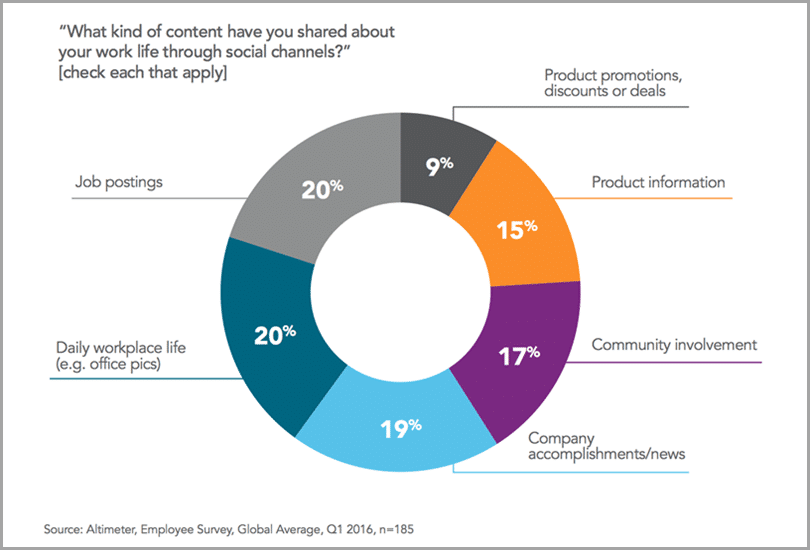
Encourage your employees to use their own creativity when it comes to sharing too.
Help Employees Establish Professional-Grade Profiles
Helping your employees create professional-grade social profiles is an important first step. As the saying goes “the medium is the message”; the quality and authority of your employees’ communications will be judged, in part on the quality of their profiles.
Problem is, most people don’t know what they need to do to establish a professional-grade profile and even if they did, they likely don’t have the skills or resources necessary to craft good copy or produce nice visual assets. This is where you can get involved and support their needs.
For your employee: Provide them with basic resources (e.g., access to a copywriter, a photographer, and a graphic designer) to spruce up their profiles. In total, we’re talking maybe a hundred dollars in cost per employee. The result: increased authority and willingness to show it off and get involved in sharing content.
For your company: While you don’t own an employee’s social profiles, they represent your business and in many ways are now an extension of your brand. You want your employees’ profiles looking good, being seen as trusted authority figures in your industry, and positioned for success. Help them put their best face forward!
Have Them Speak the Language of the Network
Once the foundation of a great profile has been laid, it’s time to focus on communication. No one network is the same in terms of how its members communicate. Some networks are for friends and family, others are for strangers, others are for professionals and business orientated.
It’s best to think of each network as its own little unique society. They have their own language, social structure, and rules around behavior. To be effective – to get people to pay attention to what you’re saying – you need to know how to talk the talk and walk the walk.
Just like with profiles, a simple way to show how things are done is to compile a collection of good and bad examples of communication on each network. Teach them what good communication looks like, encourage them to mimic it, and help them develop their own voice.
The easiest way to do this is to establish a simple social media policy that covers the basics and provides unique examples of good social communication. Without a good social policy that is easily accessible, you may be deterring your workforce from getting involved.
For your employee: We recommend providing ongoing support and development; communicating is something they’ll be doing every day! Regular feedback and criticism from people who know what they’re doing, access to mentors, even a quarterly speaker series are all effective programs many companies have put in place.
For your company: An effective communicator will produce more and better results than an ineffective communicator. Further and just like an employee’s profile, their communications are connected with your brand. It’s very much within your interest to help them refine their skills.
Set Goals for Your Employee Advocacy Program
Just as it’s critical to set clear and measurable goals when you’re developing your marketing strategy, you should also define clear goals for your employee advocacy program.
This will make it easier to measure the success of your program. It will also give you a clearer path of how to go forward.
For example, you could set the goal of having X employees posting brand content on social media at least once a month by a certain date, or you could aim to increase your overall referral traffic from social media or your number of social shares in a set period of time.
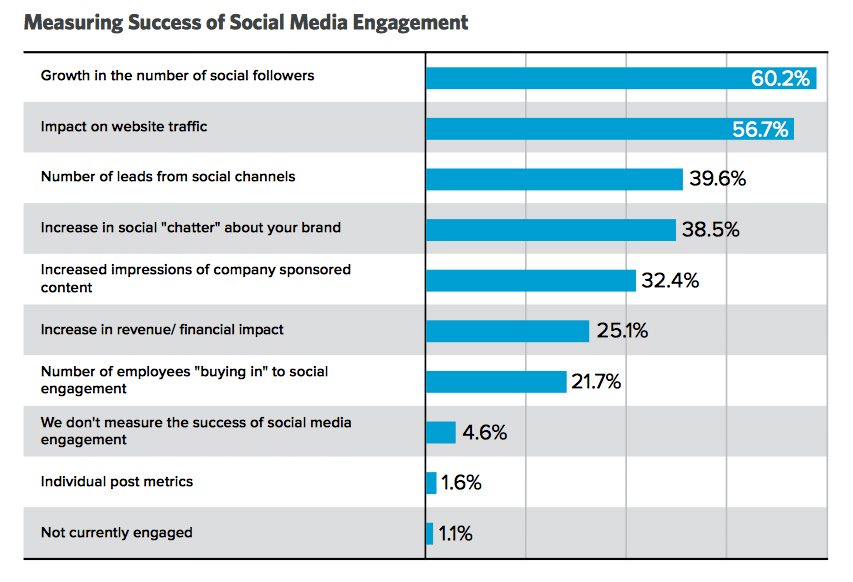
By tracking and measuring your brand social activity regularly, you should have a clear idea of who your top advocates are, the type of content that is most successful on social media, and how increased visibility and engagement are impacting your overall marketing goals.
Show Them How to Grow Their Networks
Friends, followers, and connections are the currency of social media. The more quality people you’re connected with, the more people your communications will be exposed to, and the more likely it is they’ll be clicked and engaged with.
Growing their networks and to be aware of the current social media trends should be a priority for your employees. Every single day, every one of your employees are interacting with people or doing things that present an opportunity to add more people to their networks. They just need to know when and how to go about doing it.
For your employee: Connections are currency: each one of them literally has a value. Consider sharing the value your company places on a connection to drive the point home. There’s no greater service you can provide an employee in the social realm than helping them grow their networks.
For your company: The more quality connections your employees have, the better the results will be when they share your content. Helping someone grow their network does not require much and the dividends to you and them will be great.
It Should Always Be About Your Employees
These are three, simple things you can do to get more of your employees behind the idea that being social is going to be valuable to them and your company. However, it’s really just the beginning.
Once you’ve got them rolling, additional pieces are going to be needed to put in place to keep them going on a day-to-day basis. Specifically, I’m speaking about incentives and recognition, both of which we’ll dive into in future posts. When employees are recognized for their efforts and given a chance to get more involved with their company, the results will speak for themselves.
Of course, the goal of an employee advocacy initiative is to help drive more brand awareness, increase web traffic, improve leads, etc. But, remember that without your workforce, your company has no chance in growing.
For the level of adoption to work and employees to actually care about being social, they need to understand the benefits to them personally and how to effectively be involved. Employees are not required to be socially active, nor is their social accounts in your control so if all you care about is how it helps you, you’ll lose their interest right from the start.
Final Thoughts
As with every business initiative, it’s about taking the long view. Yes, you can absolutely start to produce results next week, however, you need to put some miles on the engine before you push the pedal all the way down. Employee advocacy is about culture and enablement.
Your employees can be your greatest asset, however, you need to get them to the starting line, build trust, and provide real incentives and rewards for their involvement. If they believe there’s value in it for them they’ll engage and you’ll end up with a top performing program.
If you are ready to get more traffic to your site with quality content that’s consistently published, check out our Content Builder Service. Or maybe you are looking to activate your employees? Set up a quick consultation, and I’ll send you a free PDF version of my books. Get started today and generate more traffic and leads for your business.






